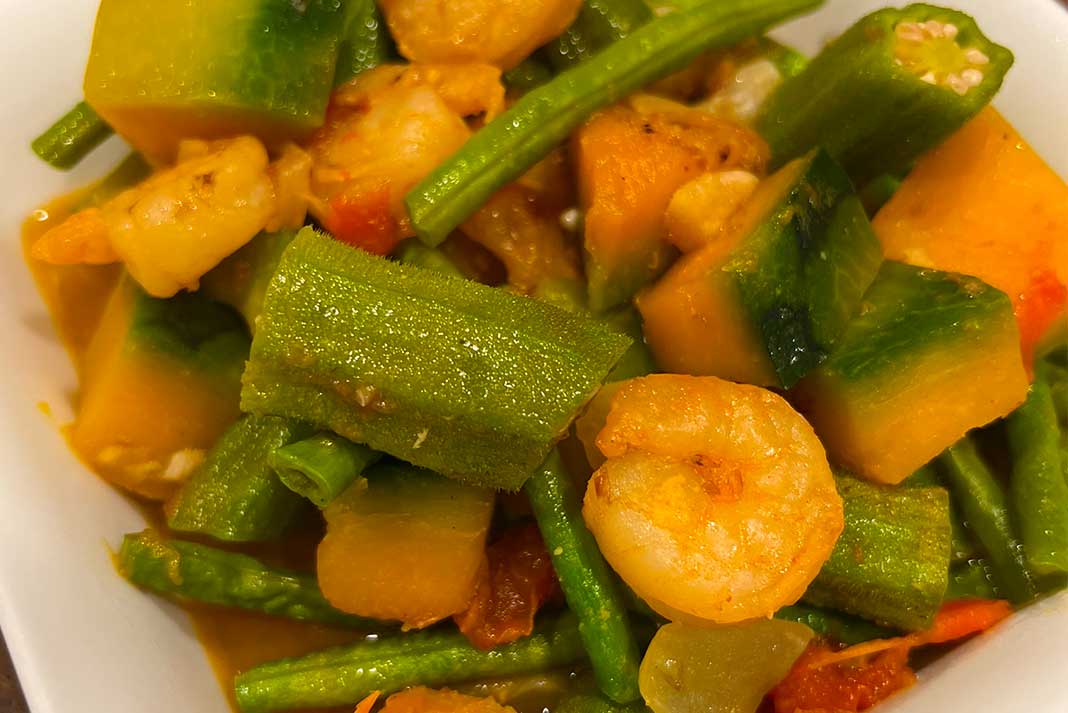Pinakbet is a traditional Filipino dish that originated in the Ilocos region of the northern Philippines. It is a vegetable stew that is cooked with shrimp paste or fermented fish sauce, and sometimes with pork or other meat. Pinakbet is derived from the Ilocano word pinakebbet, which means “shriveled” or “shrunken”, as the vegetables are cooked until they are soft and tender. Pinakbet is a delicious and healthy dish that showcases the rich and diverse culture and cuisine of the Philippines. Here are some of the reasons why you should try pinakbet:
- It is a versatile dish: Pinakbet can be made with different kinds of vegetables, depending on the availability and preference of the cook. Some of the common vegetables used in pinakbet are okra, eggplant, bitter melon, squash, sweet potato, string beans, and tomato. You can also add other vegetables, such as cabbage, chayote, spinach, or kangkong. Pinakbet can also be flavored with different kinds of bagoong, which are fermented seafood products. The Ilocano version uses bagoong isda, which is made from fish, while the Tagalog version uses bagoong alamang, which is made from shrimp. Pinakbet can also be cooked with different kinds of meat, such as pork belly, lechon kawali, bagnet, chicken, or shrimp.
- It is a nutritious dish: Pinakbet is a good source of vitamins, minerals, antioxidants, and fiber, which are essential for your health and wellness. The vegetables in pinakbet provide vitamin A, vitamin C, folate, potassium, iron, and calcium, which can help boost your immune system, prevent anemia, and maintain your bone health. The bagoong in pinakbet provides protein, iodine, and sodium, which can help regulate your thyroid function, blood pressure, and fluid balance. The meat in pinakbet provides protein, iron, zinc, and vitamin B12, which can help build your muscles, blood, and nerves.
- It is a flavorful dish: Pinakbet has a unique and appetizing aroma and taste that comes from the combination of bagoong, garlic, onion, and bay leaf. The vegetables in pinakbet have a variety of textures and flavors, from crunchy and bitter, to soft and sweet. The bagoong in pinakbet adds a salty and savory dimension to the dish, while the vinegar adds a sour and tangy kick. The meat in pinakbet adds a rich and meaty flavor and texture to the dish. Pinakbet is best served with hot steamed rice, which complements the savory and tangy taste of the dish.
Pinakbet is a dish that reflects the history and diversity of the Filipino people. It is a dish that was influenced by the Spanish colonization, when the Filipinos adapted the Spanish method of preserving food with vinegar and salt, and added their own ingredients and spices. It is a dish that varies from region to region, and from family to family, depending on the availability and preference of the ingredients. It is a dish that represents the identity and pride of the Filipino people, who have shared and spread the dish to other parts of the world. Pinakbet is truly a flavorful and nutritious dish that deserves more attention and appreciation.

